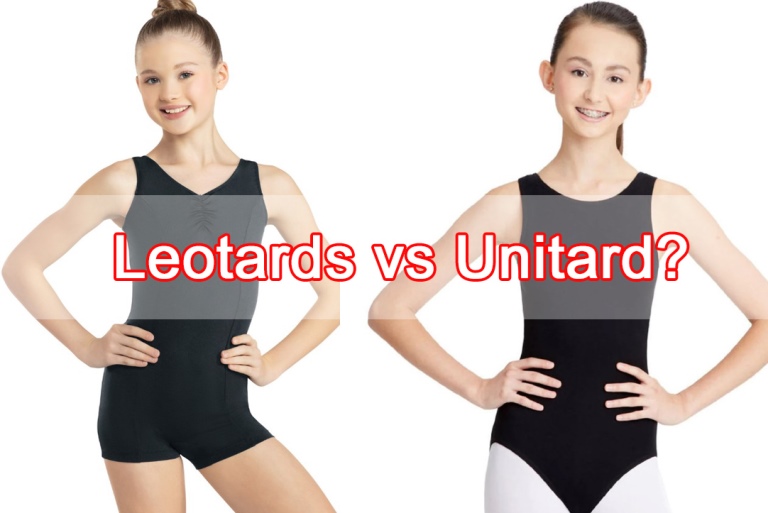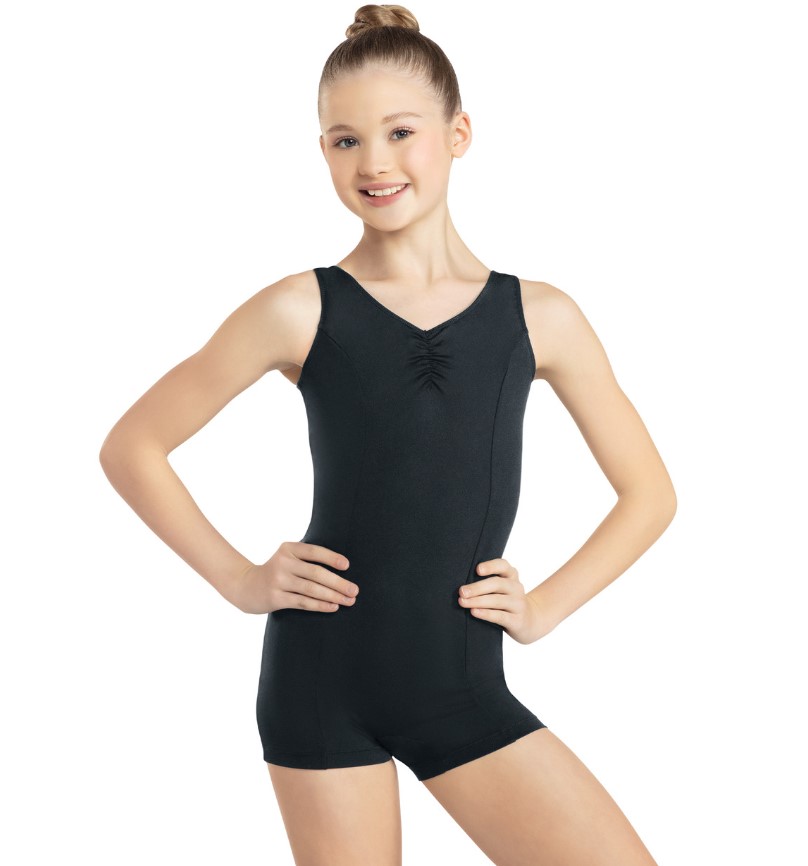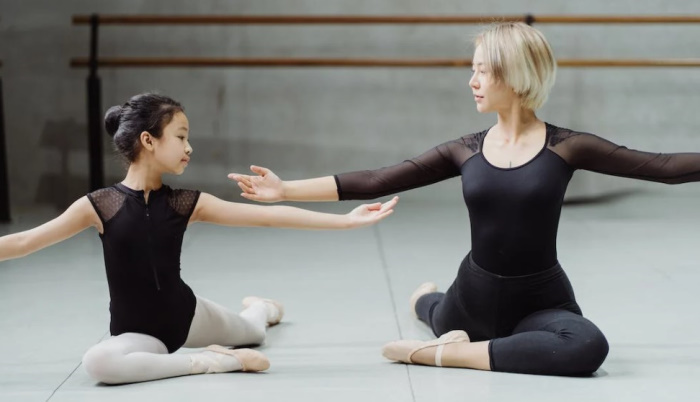For beginners and non-dancers, telling the difference between Leotard vs Unitard might be a little challenging.
Before you get confused by online reviews and guides, we have a much easier way to help you distinguish them. Perhaps, you will be able to decide which is the one you need after browsing this article!
Table of Contents
What Is Unitard?
Unitard is a one-piece of clothing that hugs your body like a second skin, always with long legs and often long sleeves.
All performers who put their bodies to hard work typically use unitards to give their audience a show instead of concealing themselves with intricate costumes.
All these years, unitard has been known as a bodysuit. Its purpose is to give the performers full protection while still putting their figures on show.
Nowadays, the definition has become clearer. A unitard is professionally referred to as outerwear.
Unitard didn’t have a transparent position among dancewear items until the 1970s when contemporary dancing attracted more dancers.
We also need to acknowledge the contribution of lycra and spandex in creating a category for unitards and separating them from ballet costumes.
Modern unitards look very different from ballet leotards, yet they still let you have movement freedom. With a minimalistic unitard, the dancer’s expertise is seen thoroughly, unlike when they are dressed in eye-catching outfits.
What Is Leotard?
Leotard resembles a unitard as a single-piece garment hugging our body in a perfect fit.
Many people find them similar to swimsuits because they reveal the legs. The extent of exposure is also why only ballet dancers utilize leotards.
While tight bodysuits known as the original unitards came to life first, leotards were quicker in making their names known.
From the creation by Jules Leotard, it took a long time until nylon leotards were made and became a go-to choice for dancers.
In the last century, the dresses worn by female dancers are gradually cut shorter. They can eventually forsake silk hoses and choose suitable clothes that don’t hinder their movements.
Leotards also reach their prime time due to the innovative materials with great properties such as breathability and moisture absorption. We even have seamless leotards now for the dancer’s full modesty.
Check more: 7 Best Leotards For Gymnastics
Unitard vs Leotard Similarities
The most noticeable thing they have in common is the fabrics.
Spandex and Lycra are skin-tight materials used for making unitards and leotards for dancing as well as gymnastics. It’s also why a lot of people mistake one for another.
You will find both of them with all sorts of necklines: high necks, V-necks, sweethearts, and more.
They are also very versatile when it comes to the sleeves. They might have camisole straps, capped sleeves, or full-length sleeves.
Last but not least, unitards and leotards are unisex. Both female and male dancers or gymnasts can wear these outfits for their practice convenience.
Key Differences Between Leotards and Unitards
| Factor | Leotard | Unitard |
| Coverage | Covers the torso; legs are exposed. | Covers the torso and legs; may also cover arms. |
| Usage | Popular in ballet, gymnastics, and fitness classes. | Preferred in contemporary dance, acrobatics, and performances requiring full-body coverage. |
| Comfort and Movement | Offers greater freedom for leg movements; suitable for styles emphasizing legwork. | Provides a streamlined silhouette; beneficial for movements involving the entire body. |
| Aesthetic and Style | Often paired with tights or skirts; available in various designs and colors. | Offers a sleek, uniform look; can be customized with accessories or overlays. |
Choosing Between A Leotard And A Unitard
If you want to distinguish leotard from unitard in one second, you can simply observe the lower part. Unitards will cover the entirety of the legs and the arms, while leotards keep the legs exposed.
Targetted Users
Ballet dancers wear leotards most of the time. It is because the display of leg work has become increasingly important for them, and the exposure of leotards is perfect for this purpose.
On the other hand, athletes, dancers, contortionists, and any other form of practice that requires a tight suit will be more satisfied with a unitard. Because the full coverage gives them a streamlined silhouette and flatters their body during a performance.
What to wear with
Unitard doesn’t need anything beneath it.
But a leotard usually comes with ballet tights so the dancer won’t feel too exposed, especially when male dancers wear them.
Variety
Leotards expose the legs and this high cut is about the only outstanding feature you will find.
Meanwhile, unitards have sleeves and straps that the designers can be creative with.
Gender
Surprisingly enough, a leotard was made for male performers at first, because women had a lot of rules to follow when it comes to their attires.
When society changed its opinions on female dancers, leotards become such a beneficial costume for them.
On the other side, unitards were for women since the beginning.
FAQs
1. Do You Need Both Unitard And Leotard?
If you are pursuing a professional career, yes, you will need to equip yourself with both.
When you are alone, you may wear everything and anything you deem suitable. But if you learn contemporary dancing, a unitard is the unofficial uniform for you.
Additionally, practicing hip-hop in ballet tights and leotards would be pretty inappropriate.
As a new dancer or a dance parent, it’s better if you consult the studio and the teacher for a possible dress code. You will undeniably do well when you start right by dressing up as you should.
2. Why Is It Called Unitard?
We can break the word ‘unitard’ into two parts, uni- and -tard.
It is a term derived from leotard (even though unitard technically appeared first) and combined with the prefix ‘uni’, which means ‘single’ or ‘in one’.
There are several reasons why the unitard never became as popular as the leotard.
Back in the past, women wore skirts and dresses by default. And the original form of the unitard was intended for men.
The foremost purpose of unitard was to resemble bare skin. Hence, it might be either too revealing or not fashionable enough for female performers.
3. What Do Dancers Wear Under Unitard?
Dance teachers would ask their students to disregard the underwear and focus on the dancing because if the undergarments bunch up, it would be an unpleasant sight for the eyes.
However, unitards fit tightly and thus feel uncomfortable for newbies. It’s recommended to choose a costume with a lined front panel and always keep it clean.
4. Why Do Gymnasts Wear Unitards?
When gymnasts choose unitards, they have movement freedom and flexibility in mind, nothing else.
Unlike leotards and their high cuts, unitards provide thorough coverage for the legs and make the gymnasts feel much less reserved about giving their all in the performance.
Final Words
The leotard vs unitard differences might be trivial. But they are sufficient for you to recognize them if you are ever in a situation where you have to choose one of them.
Would you prefer the safety of a unitard or the prominent leg exposure of a leotard?
Are you able to overlook the sheepishness and concentrate on showcasing your leg work?
Please comment to let us know.


